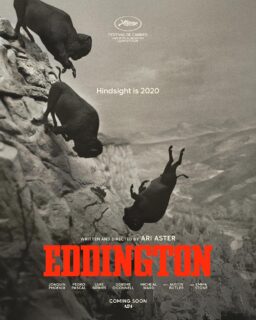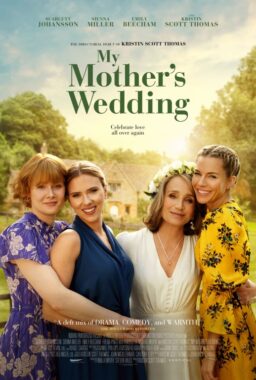“My favorite Hollywood suicide of all,” Kenneth Anger said, “was Gwill Andre’s. She was a starlet who got her pictures in all of the magazines – Film Fun had photos of her galore – but all she got in the movies were walk-on roles. Well, one day she got fed up at having stardom denied her. So she went out in the back yard and built a funeral pyre of all of her press clippings. She lit it and jumped on. That sure does beat ‘Day of the Locust.'”
I had to agree. Anger, whose hobby for nearly 30 years has been collecting gossip and photographs about the scandals of the stars, picked up a copy of his book, “Hollywood Babylon” (Delta paperback, $5.95) and flipped through it.
“Here she is,” he said. “Wasn’t she a beauty? And here’s Peg Entwistle, another tragic case. She was the girl who killed herself by jumping off the Hollywood sign. That’s the big dilapidated wooden sign up in the Hollywood hills – only then it spelled ‘Hollywoodland’ instead of Hollywood, and therein lies the tale…”
Two or three people at the bar in Riccardo’s drifted closer, their curiosity aroused, perhaps, by Anger’s green suit with the buttons made of large replicas of spiders.
“Peg Entwistle?” one said. “Wasn’t she the girl who who…”
“I’m just getting to that,” Anger said, sipping at a beer. “She was a sweet little girl – Bette Davis was quite fond of her – but her career went nowhere but down. One day she climbed up into the hills, quite a feat in itself, and jumped off the final ‘D’ in ‘Hollywoodland.’ It was the 13th letter, you see, and she’d just played the girl who got bumped off in ‘Thirteen Women.’ She fell to her death. Later, to discourage others, they took down the letters spelling ‘land’ – so there wouldn’t be a 13th letter, you see.
Years later, Dory Previn was to turn the whole story into her song, ‘Mary C. Brown and the Hollywood Sign.’ “
Anger talked in a quiet, conversational voice, as if they were oft-told tales for him – and indeed, they were. Since 1947, when he made his controversial and often-banned underground film “Fireworks” at the age of 15 (it was filmed, according to Sheldon Renan’s history of underground film, “on three nights when his parents were away”), Anger has devoted his life to two things – making underground films and collecting evidence about Hollywood private lives.
He was visiting Chicago on a dual mission: to show his films at the school of the Art Institute, and to promote the new edition of his book, the one with Jayne Mansfield leaving nothing to the imagination on the cover. (“Notice the little touches of shocking pink?” he asked. “Shocking pink was Jayne’s favorite color.”)
How did you get started? I asked him. Where did you dig up all these photographs – the police photos and the morgue shots and the nudes of people like Jean Harlow?
“I got started when I was only a student at Beverly Hills High School,” he said. “I collected all the clippings about everything. And then when Lupe Velez committed suicide, she lived just a few blocks from us, so I went over to talk to her maid and her cook.
“Hers was a sad suicide…and yet, with an ironic twist. She was known as the Mexican Spitfire, a really lovely girl. A playboy got her pregnant, and she decided to kill herself. She had it all planned. She’d be discovered dressed in a white satin gown, lying on her back in bed with her fingers crossed on her chest, and the whole bed flanked by floral bouquet – which she had to charge, because she was broke. And then there’d be a suicide note to the playboy.
“Well, things didn’t quite work out as planned. Before she took the sleeping pills, she had one last meal of all her favorite Mexican foods, with lots of chili peppers. When she took the pills, they reacted with the enchiladas, and she became violently ill. She raced into the bathroom, slipped on her high heels, fell into the toilet and drowned. There went her whole Snow White fantasy.”
Anger shook his head at the irony, and refused a second beer from his fascinated listeners it the bar.
“I’m speaking at the Art Institute in half an hour,” he said. “That’s why I’m wearing this suit, which I very seldom put on. This is made from a bolt of cloth set aside for him at his tailor’s by Aleister Crowley the great magician. And the spider buttons are magical, too.”
I’ve heard, I said, that you are a follower of Crowley, and that you believe your films are invocations of magic spells.
“That’s right,” he said. “Last year, we celebrated his 100th birthday. We had a little party to toast him. We served curry, his favorite. I’d like to make a film based on his life. He was the greatest master of black magic of his era – and not just what Lord Beaverbrook called him, the wickedest man in world.”
How do your films create magical states?
“Some movies can be the equivalent of mantras. They cause you to lose track of time you become disoriented magical things can happen. Magic causes changes to occur in the universe. You can mix two elements together and get an unexpected result just beyond the edge of what you realize.
“In commercial films, the occult is a subject for horror, but in my films, it’s more friendly. That’s not to say I don’t know the difference between a demon and an angel, because I do. For example, in ‘The Exorcist.’ Lucifer would never have bothered himself with a case like that little girl. She was possessed by a minor demon or an imp.”
I asked Anger about his new film, “Lucifer Rising,” which has been in production, off and on, for 10 years and celebrates the beginning of the Age of Aquarius.
“Yes,” he said, “the beginning of the pagan age and the end of Christianity. The forces of darkness and figures from mythology walk the streets. One of the actors in my original version was Bobby Beausoleil, who got involved with the Manson family. I fired him from the film because he was dishonest, to say the least. Two years later, he met Manson. I knew him when he was 19, and although he was, in quotes, a ‘bad boy,’ he was so immature. Manson just overwhelmed him. Manson is part of the complete moral and anarchic chaos we’re in for. It will last for 1,500 years, until a new system comes along.”
In the interim, he said, he was working on a film version of “Hollywood Babylon” that would deal with some of the same scandals and stories in the book.
“People just don’t imagine,” he said. “Look at Rudolph Valentino, for example, the great lover. Well, his first wife was a lesbian, and so was his second wife, and he neglected to divorce the first wife quite in time, so he was a bigamist to boot. He was killed by a Chicago Tribune editorial.”
I had to confess I had never heard that before.
“Yes, it killed him,” Anger said. “He was on a cross-country tour to promote ‘Son of the Sheik,’ and when he got off the train in Chicago here was this Tribune editorial headlined ‘Pink Powderpuff.’ It said the reason there were so many pansies floating around N. Clark St. was because of Valentino’s influence. He used perfume, brilliantine…even wristwatches, which were considered very, you know…
“Valentino challenged the editorial writer to a duel, but the writer refused, and Valentino went on to New York, where he died two weeks later of peritonitis. It’s as if the editorial shook his guts up so much.
“I have footage of his funeral. Police horses trampling hysterical ladies, it’s unbelievable. To control the crowds, they made up a wax replica of Valentino, and exhibited that under glass through one door of the chapel and Valentino under glass through another door. There were 100,000 people there, and none of them figured out that half of them weren’t seeing the real Valentino. Of course, he looked like a wax mask himself. He should have stayed in Italy. He would have been better off in the long run.”











